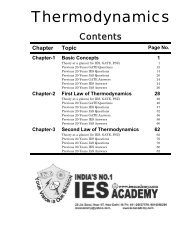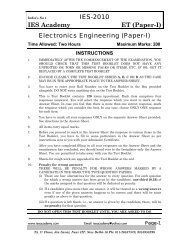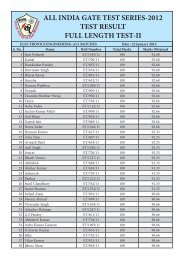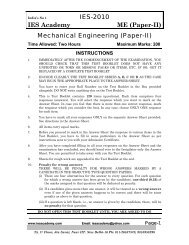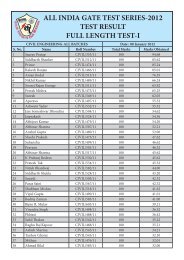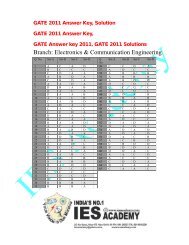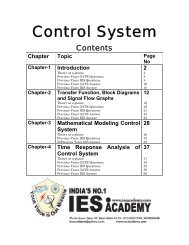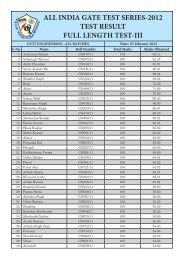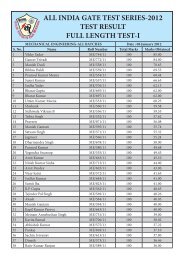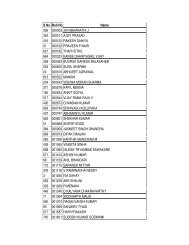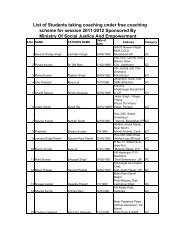Electrical Machine - IES Academy
Electrical Machine - IES Academy
Electrical Machine - IES Academy
Create successful ePaper yourself
Turn your PDF publications into a flip-book with our unique Google optimized e-Paper software.
India’s No. 1<br />
<strong>IES</strong> <strong>Academy</strong><br />
Transformer<br />
Chapter-1<br />
2<br />
nPsc<br />
n =<br />
= P<br />
Pc<br />
P<br />
sc<br />
C<br />
Hence,<br />
( kVA) max<br />
η = ( n)( kVA) rated<br />
The maximum efficiency, for a constant load current, occurs at unity power factor.<br />
The maximum efficiency in case of power transformers occurs when core loss is<br />
equal to full load copper loss.<br />
Power transformers are used at the sending and receiving ends of a high-voltage power<br />
transmission line for stepping up or stepping down the voltage. These transformers are<br />
manipulated to operate almost always at or near their rated capacity (kVA rating). In view of<br />
this, a power transformer is designed to have maximum efficiency at or near its full<br />
load (rated) kVA.<br />
A distribution transformer has its secondary directly connected with the consumer's terminals.<br />
The load on a distribution transformer varies over a wide range during a 24 hour day. Since<br />
the primary of distribution transformers are always energised and, therefore, the core loss<br />
takes place continuously. In view of this, the distribution transformers are designed to have<br />
very low value of core loss. But for reduced core loss Pc, the maximum efficiency may occur at<br />
about one-half of its rated kVA. Hence, the choice of a distribution transformer is based<br />
on energy efficiency. Energy efficiency of a transformer is defined as the ratio of total<br />
energy output for certain period to the total energy input for the same period. When energy<br />
efficiency is computed for a day of 24 hours, it is called all day efficiency.<br />
All day<br />
daily Lossesin kWh<br />
η= 1 −<br />
daily Input in kWh<br />
Testing of Transformers<br />
(A) Polarity Test<br />
Polarity test on a two winding transformer to be operated in parallel (a) subtractive polarity<br />
and (b) additive polarity<br />
On the primary and secondary sides of a two-winding transformer, one terminal is positive<br />
w.r.t. the other terminal at any one instant. These relative polarities of the primary and<br />
secondary terminals must be known if the transformers are to be operated in parallel or are to<br />
www.iesacademy.com E-mail: iesacademy@yahoo.com Page-16<br />
25, 1 st Floor, Jia Sarai, Near IIT. New Delhi-16 Ph: 011-26537570, 9810958290




